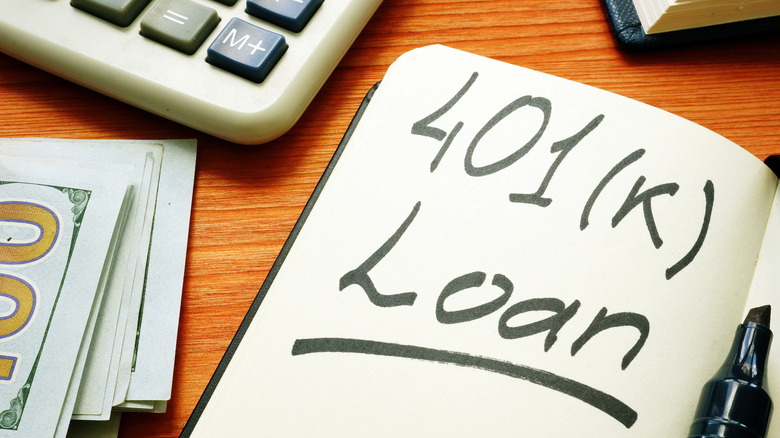Steps You Should Take If You Need To Withdraw From Your 401k For An Emergency
Today more people than ever are making early withdrawals from their 401(k), according to a new study from Vanguard. Approximately 4.8% of account holders initiated a hardship withdrawal in 2024 compared to just 3.6% in 2023. Whether it's a medical bill, sudden job loss, or another emergency, tapping into retirement savings may provide some quick relief but it comes with long-term consequences. A 401(k) account is designed to support you in retirement by allowing your money to grow tax-free for several decades, and early withdrawal may significantly reduce the money you have access to later in life.
When considering a 401(k) withdrawal, it's important to understand what's truly at stake. According to Fidelity, there are potential penalties, taxes, and the risk of setting your retirement back several years. Luckily there are some options to leverage your retirement account during financial hardship or in an emergency that can come in handy.
Understanding the consequences of early 401(k) withdrawals
While a sizable 401(k) can feel like a financial safety net, withdrawing funds before the age of 59 and a half can trigger significant penalties. Most early withdrawals, unless they meet certain requirements like a terminal illness, will face a 10% penalty in addition to having to pay income tax on the amount taken out. That means if someone withdraws a sizable amount they may owe thousands in penalties and taxes alone.
But beyond the initial financial hit, early withdrawals also have long-term effects. Money taken out prematurely misses out on the opportunity to grow through compounding interest, which is one of the biggest advantages in retirement investing. For example, withdrawing $10,000 at the age of 33 instead of leaving it to grow at a modest 7% per year could mean missing out on over $60,000 in potential growth by retirement age, according to a compound interest calculator. Understanding the true costs is essential before deciding to make an early withdrawal or looking for an alternative solution.
Smarter ways to make early withdrawals from a 401(k)
The first thing to consider if you're thinking about tapping into your retirement savings is applying for a hardship withdrawal exemption. The IRS allows penalty-free access for certain emergencies such as medical expenses, disability, or avoiding foreclosure. However, individuals who apply for this will still need to pay income tax and must meet several requirements before being approved. While emergencies may justify tapping into retirement funds, understanding the trade-off can help prevent short-term relief from becoming a long-term setback.
Another popular choice is taking out a 401(k) loan through your account provider. This route lets account holders borrow from their balance up to 50% of their available funds or $50,000, whichever is less, and can be a great way to pay off high-interest credit card debt. These loans must be repaid in full with interest; however the interest paid is credited to the account, helping lower the hit of lost compounding interest. It is also important to know that if an individual leaves their job and has a 401(k), they may be required to pay it in full in a shorter period.


